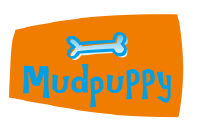Once you and your family are past the initial fun of having a new puppy in your house, you should set up a health, cleaning and grooming schedule as soon as you can. Grooming makes your dog look good and is good for his/her health. It prevents problems such as excessive shedding, skin issues, mats in his/her hair, paw problems from untrimmed nails, and ear and eye troubles. .
This will, in time, make him accustomed to being handled and examined. Eventually, he will be quite comfortable being groomed, and will look forward to these sessions.
- Let your dog smell the comb or brush before the grooming starts. With a reassuring voice, trust is instilled in the dog. Brush the coat daily to remove dirt. It also prevents tangles from occurring and keeps the skin clean and free from irritation.
- Begin brushing from the head, and move in the direction of the tail and legs. Legs should be give special attention, since often the hair tangles there the most, if the fur is long.
- For a dog who resists brushing, you can try treats and plenty of praise to train it in grooming exercises. Just remember not to overfeed it!
- Puppies have short attention-spans, so the grooming of a puppy should be short. With calming words, the puppy will get used to this action and will look forward to it.
- Select a routine for grooming your dog. After a walk, when the dog is relieved and calm, is the best time.
- Groom your long-haired dog every day. Short-haired dogs can be groomed twice a week.
- Match the brush to your dog’s coat type.
Spray on coat conditioner such as mink oil before brushing. This helps to loosen knots in long-haired breeds.
- Badly matted, long coats should be clipped and then left to grow out. By doing this, your dog can be spared the pain and irritation of hours of detangling.
A good idea is to put your dog on something to groom eg a washing machine or ironing board away from the distractions of the living room. Knees and floors are for loves, cuddles and playtime. The puppy needs to know that when they are up on the grooming table that you mean business.
Don’t ever let your puppy “mouth” the grooming equipment. This, allthough cute at the time, can prove to be very dangerous as the puppy gets older and stronger. A bite at the groomers hand is not uncommon in pups that have been allowed to do this.
Essential Equipment Needed
- Slicker brush (soft or firm depending on breed of dog)
- Moulting comb or straight comb
- Puppy or dog shampoo (specific to your dogs skin and coat type)
- Flea comb
- Towels
- Treats
Additional Equipment (useful but not essential)
- Nail clippers and styptic powder
- Mink oil or detangler
- Undercoat rake (for shedding breeds)
- Dematter
- Pin and bristle brush
- Rotating comb
- Blow dryer
- Conditioner
- Baby wipes
- Thinning sissors

Comments